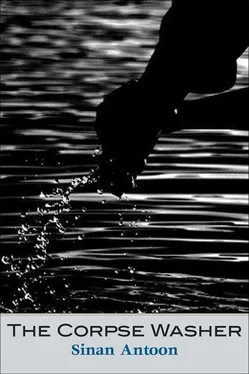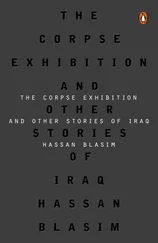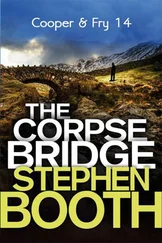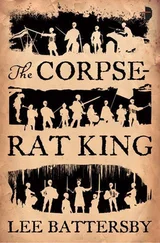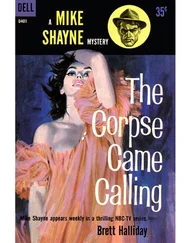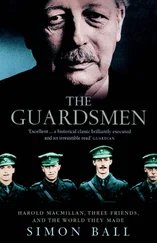He waved his hand and said, “Look at him, for God’s sake. They put him there as a Shiite, and not because he represents an ideological trend or a party with its own history of political struggle. What a shame that this is what it all comes down to. Now an entire history of resisting dictatorship and rejecting war is being trashed. Communists will be like all these other fuckers and crooks. Look at them. Each has a belly weighing a ton.”
Nevertheless, we went to Liberation Square on the morning of July 14th. My uncle said he wanted to commemorate the revolution and the sacrifices of Communists despite what had become of the party in recent years. Hundreds had gathered under the Liberty Monument. I had not stood under it or passed by it for a long time. It was a bit dirty, because of all the pollution and negligence. It looked like it desperately needed maintenance and restoration, but it still had that aura. I remembered Mr. Ismael and my dreams of becoming a great artist — which had all now evaporated.
There were many Communists present, of course, and the organizers wore red ribbons around their arms. But many others seemed to be sympathizers, or perhaps found themselves closer to the Communist Party than to any of the other sectarian parties. There were even a few veiled women. Perhaps many were attracted by the slogan on many of the placards carried by some: “No to Occupation, Yes to Democracy.” There were other banners as well, many red flags, and posters of Abdilkarim Qasim, who was the first prime minister after the pro-British monarchy was toppled in 1958. I was used to reading his name in the context of condemnations by the Ba’thists because he had supposedly been a dictator. That Saddam had participated in a failed assassination attempt on Qasim’s life had been one of those heroic epics repeated to us hundreds of times, so it was quite strange for me to see Qasim’s image being paraded about, not to condemn him, but in celebration of his memory.
My uncle was one of those who believed that, despite his mistakes, Qasim was the first indigenous Iraqi to rule the country in the twentieth century and that he had accomplished important feats. He said as he pointed to the American soldiers who were monitoring the spectacle from a Humvee that the Americans had been against Qasim and had helped the Ba’thists overthrow him.
The mood was festive. A group played popular music and many danced. I even saw a woman in her sixties applauding and dancing along. My uncle said that she was a veteran Communist who’d returned from exile in London. He knew her because of the articles she regularly published on leftist websites. Passing cars were honking to salute the demonstration. My uncle seemed enthusiastic despite his dismay with the party for its decision to enter the governing council.
I told him that seeing the demonstration one would think that the Communist Party could win the elections in a landslide and rule the country. When I heard some of the demonstrators chanting “Fahad, Fahad, your party isn’t dead and will live forever,” I asked him who this Fahad might be. He was shocked.
“Fahad was the founder of the party,” he said. “He was executed by the monarchy and famously said right before being executed, ‘Communism is stronger than death and higher than the gallows.’ You have to read Batatu’s book on Iraq. It’s the most important and encyclopedic account of Iraq’s modern history.”
I promised that I would look for it and he said he would send me a copy if I couldn’t find one. After about an hour, the crowd began to move toward Firdaws Square. The demonstration was well organized. When we were marching down Sadoun Street, Uncle Sabri kept looking back to get an idea of the numbers. When we reached Firdaws Square, the crowd had swelled. American choppers hovered over us.
Later events proved any optimism about secularism misplaced. In the weeks following that big demonstration, many other rallies were organized by other parties. They were saturated with religious and sectarian symbols. The sectarian stamp became normal and began to acquire unusual impact. In time the Communist Party’s popularity dwindled, and its performance in elections was dismal; its secularism meant that it would be the last horse in the sectarian race. No one would place bets on it.
As we left the Communists’ demonstration that day, my uncle surprised me by expressing his desire to go to the Martyr’s Monument — the one designed by Ismail Fattah al-Turk. He said he’d seen pictures of it, and had read an article by a German critic who said that it was one of the most beautiful monuments he’d ever seen. He said he wanted to see it in its actual dimensions. From al-Andalus Square we headed in the direction of al-Sha’b Stadium. I asked whether he remembered indoctrinating me as a Zawra’ fan.
“Of course I remember!” he said, laughing. He asked about the Indoor Sports Hall next door.
“That’s the Saddam Indoor Hall,” I said.
“What will they call it now? The Bush Hall?”
We could see the severed sky-blue dome of the monument from afar. It looked as if it were closing in on itself as we approached. He took out his camera and started to snap pictures. “It’s gorgeous,” he said. The Olympic Committee building was across the street from the monument. Huge sections had collapsed and all that was left was a metal skeleton. He asked me about it. I told him that that had been Uday’s headquarters. He looked and took a few pictures and then turned back to the monument.
We were in front of the main gate. American soldiers were stationed at the monument and had turned it into a barracks. Concrete blocks and barbed wire barricaded the gate and soldiers with machine guns stood guard. Armored vehicles and Humvees were parked inside along the path that led to the monument itself.
I remembered how Reem and I had visited it after it was opened to the public back in 1989. Despite our objection to the war and its glorification, we were impressed by the monument’s beauty. I was deeply offended and angered when I saw the American soldiers and armored vehicles occupying a place which symbolized the victims of war — victims such as my brother and thousands of others. My uncle said that it was a premeditated insult, calculated for its symbolic significance. It was not a matter of logistics.
After the Martyr’s Monument he asked Hamid to take us to al-Rashid Street.
Hamid told him that most stores would be closed and he wouldn’t be able to buy anything.
My uncle told him that he wasn’t going there to shop. He just hadn’t seen the street for more than two decades.
It was about five in the afternoon and the street was already empty. Hamid said that crime was rampant and that there were a lot of killings and robberies. Most shop owners weren’t even opening their shops, and those who did closed early.
The spectacle broke my uncle’s heart. “This is what al-Rashid Street has become? It was always bustling with people. Look at it now.”
Two days before leaving, he told me that he was craving masguf. 3I told him that my mother would be more than happy to make that wish come true if we could buy fish. He refused and said that he would take me out to a restaurant.
When I asked why, he said that he’d read that fish from the river would be tainted because all the rivers were polluted with depleted uranium and untreated sewage.
I was impressed that he’d kept up with the news about Iraq when he was in Germany. But I said that the fish at the restaurant would be from the same river.
“No, they raise them in special farms.”
It was a lovely dinner, because we recalled some of our memories together. I asked whether he ever got fed up or bored with reading the news.
He said that every now and then he would promise himself not to read any more news, but then would give up after a few days. It was just impossible. It was an addiction. He asked me about my plans, and I told him that my dream was to study art abroad, in Italy or somewhere else. He was supportive and said that although his means were limited, he would help me find information about scholarships and grants and would ask a friend of his who taught art in Holland for advice.
Читать дальше
